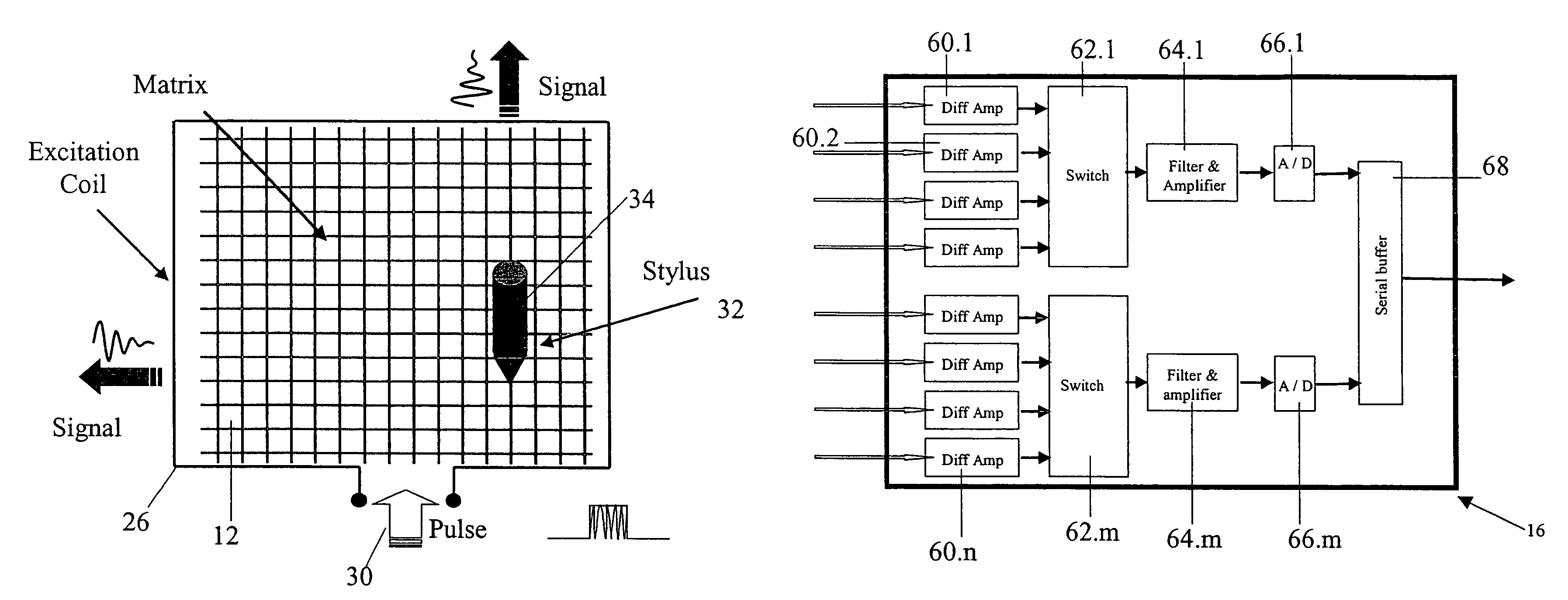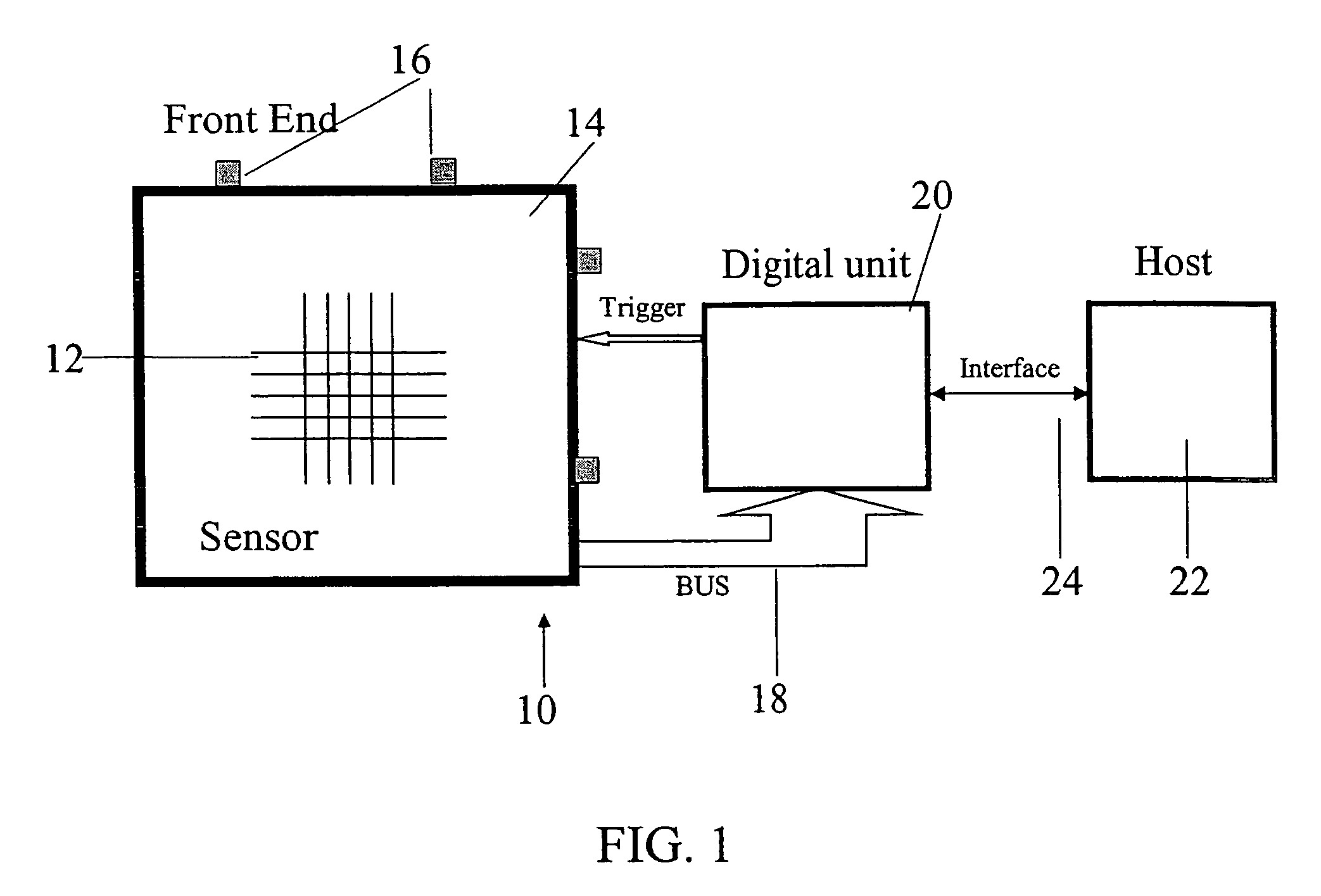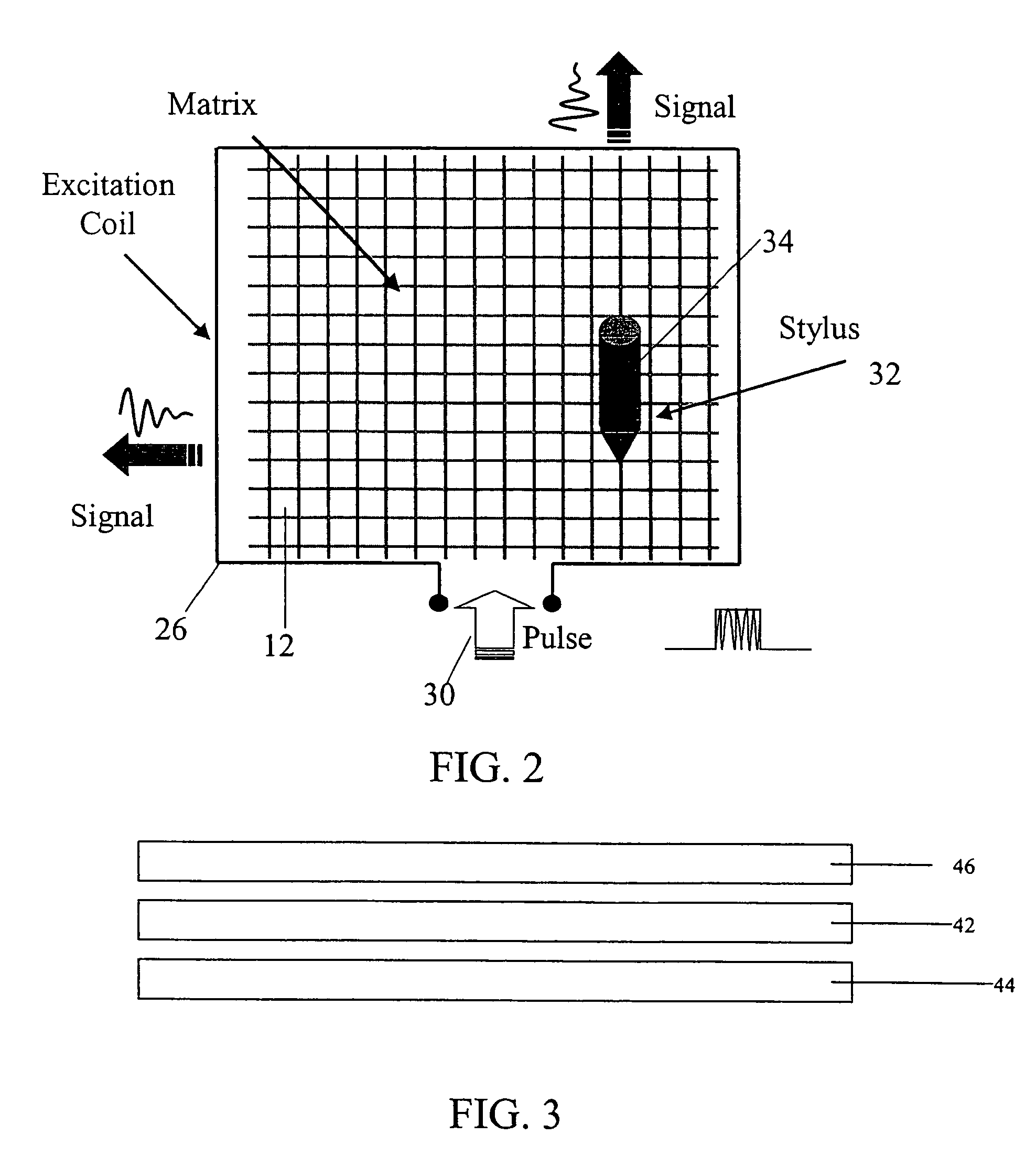Transparent digitiser
a technology of transparent digitiser and transparent foil, which is applied in the field of transparent digitiser, can solve the problems of limiting the mobility of the digitiser, the inability to use transparent conductive foil, and the inability to use wacom's method with standard metallic conductors, etc., and achieves the effect of free of nois
- Summary
- Abstract
- Description
- Claims
- Application Information
AI Technical Summary
Benefits of technology
Problems solved by technology
Method used
Image
Examples
Embodiment Construction
[0117]The present embodiments disclose a method and apparatus for locating and identifying physical objects, such as a stylus or game tokens, on top of a Flat Panel Display. The location of the physical objects is sensed by an electro magnetic transparent digitizer, which is preferably mounted on top of the display. The physical objects are preferably passive elements, that is they do not include any kind of internal power source. The passive elements are energized by a non-transparent excitation coil, which is placed substantially about the transparent sensor. The transparent sensor comprises a sensing grid or an arrangement of sensing loops, whose outputs are connected to sensing amplifiers. In one preferred embodiment the sensing amplifiers are differential amplifiers and in one preferred embodiment each sensing amplifier is connected to at least two non-adjacent outputs from the grid.
[0118]A further preferred embodiment comprises an arrangement of the passive stylus in which a p...
PUM
 Login to View More
Login to View More Abstract
Description
Claims
Application Information
 Login to View More
Login to View More - R&D
- Intellectual Property
- Life Sciences
- Materials
- Tech Scout
- Unparalleled Data Quality
- Higher Quality Content
- 60% Fewer Hallucinations
Browse by: Latest US Patents, China's latest patents, Technical Efficacy Thesaurus, Application Domain, Technology Topic, Popular Technical Reports.
© 2025 PatSnap. All rights reserved.Legal|Privacy policy|Modern Slavery Act Transparency Statement|Sitemap|About US| Contact US: help@patsnap.com



